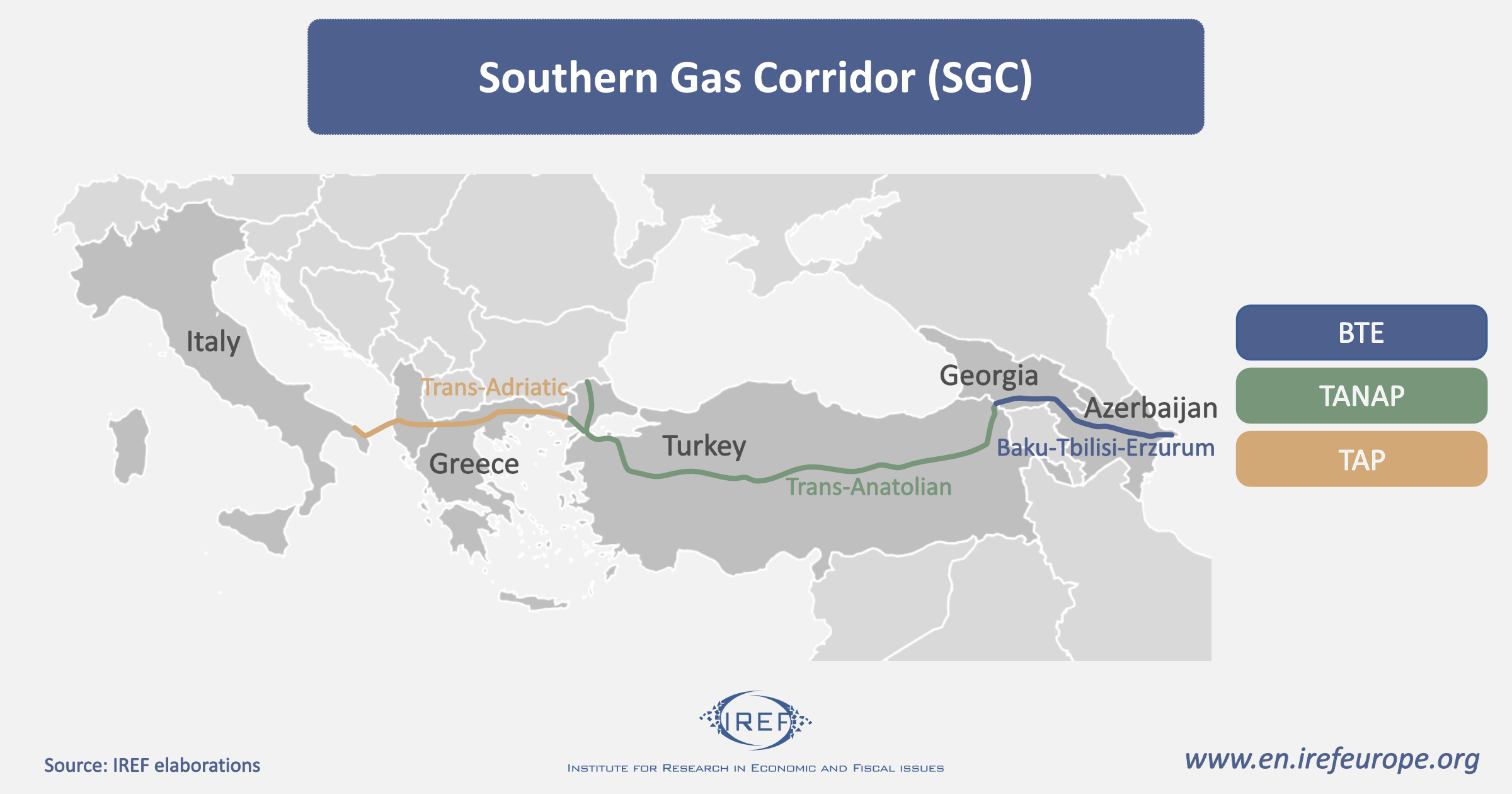Background
Since December 2020, Azerbaijan exports natural gas to Europe via three interconnected pipelines – the South Caucasus (Baku-Tbilisi-Erzurum or BTE, operating since 2006), the Trans-Anatolian (TANAP, Erzurum-Eskişehir, inaugurated in June 2018), and the Trans-Adriatic (TAP, Eskişehir to Melendugno, Italy). This set of pipelines is called the Southern Gas Corridor (SGC). The EU’s Connecting Europe Fund, the European Investment Bank, and the European Bank for Reconstruction and Development contributed to funding the SGC for about $45 billion.1
In addition to SGC, since 2022 Bulgaria relates to TAP via the Interconnector Greece-Bulgaria (IGB).

Europe hopes to buy more gas from Azerbaijan in the future, and according to the Memorandum of Understanding between the European Commission and Azerbaijan signed in the summer of 2022,2 the supply of gas to the European Union is expected to increase from 8.2bcm in 2021 to 12bcm in 2022, and to no less than 20bcm by 2027.
In theory, it all looks good. Azerbaijan will sell more gas, which means more revenues for that country; and more gas for Europe. Yet, Azerbaijan may not be able to supply all that gas, and it is not evident that the existing pipelines can carry it.
Production and transportation
According to the official statistics,3 in 2021 Azerbaijan produced 28.3bcm gas, almost 7% more than in the previous year. But if Georgia got at least 3bcm, Turkey at least 10bcm, Serbia at least 1bcm, Albania up to 1bcm, Iran up to 1bcm, etc., and if one adds local consumption in Azerbaijan, delivery of 20bcm for the EU would require a very significant rise in production. The size of the problem further increases if one considers Azerbaijan’s commitment to increase deliveries to some of its current buyers (e.g., Turkey). Azerbaijan’s proven gas reserves are large (about 2.6 trillion cubic meters), but exploitation requires significant investments and investors are absent.4
Of course, Azerbaijan can import gas from Russia, Iran, and Turkmenistan to cover its own demand and fully export its own gas. Once again, technical improvements and investments are required, and the funds are not currently available. Moreover, triangular deals are not easy: current sanctions make it impossible to buy gas from Russia, and political tensions stay in the way of deals with Iran.
Regarding the pipelines, the current annual capacity of BTE is 20bcm, TANAP’s 16bcm, and TAP’s 10bcm. IGB initial capacity is 3bcm of gas a year, with the prospect of future expansion to 5bcm. This means that the current pipeline capacity is inadequate and cannot meet the targets (20bcm) set for 2027: it would take at least a 20bcm capacity pipeline from Azerbaijan to the EU to deliver 20bcm for the EU and that pipeline is not there. Certainly, after modernization, BTE’s annual transmission capacity can go up to 31bcm by 2027. TAP could also increase output to 20bcm without laying new pipes and without needing anything in Italy. Yet, just doubling the transmission capacity of the TAP gas pipeline will cost at least 1.5 billion euros. In a similar vein, TANAP’s transmission capacity is expandable from 16bcm to 32bcm, but requires the construction of four additional pump compressors. TANAP, which has the longest distance (1,811 km) and the largest diameter (56″), requires more investments compared to TAP. Although the political consent of Turkey as a transit country for the expansion of TANAP has been obtained, the financial side of the issue is still open.
To conclude, governments dictate rules, regulate developments, set prices, and select trading partners. Private investors can only wait until the world of politics tells them what to do. Until then, Azerbaijan will unlikely become a reliable gas supplier within this decade.
1 https://www.politico.eu/article/the-eu-azerbaijan-gas-deal-is-a-repeat-mistake/
2 https://ec.europa.eu/commission/presscorner/detail/en/IP_22_4550
3 https://www.stat.gov.az/source/balance_fuel/?lang=en&fbclid=IwAR2ChzIniTAyIcUrv_cu0PZSlzgTAL0GPIL4rRVQBwOLBN1fY5qt_u5QKds
4 https://news.az/news/azerbaijans-confirmed-gas-reserves-are-at-26-trillion-cubic-meters-president


